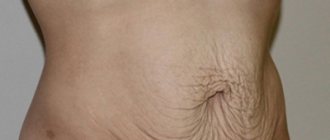In the pursuit of perfection, a woman is ready not only to change her facial features, remove excess fat, but also undergo surgery on the genitals in order to give her most intimate private parts an ideal shape. Plastic surgeons practice minimally invasive and radical methods, relieve women of complexes, and solve health problems.
What is intimate plastic surgery?
Intimate plastic surgery is the aesthetic correction of defects in the human body. Plastic surgery can change the shape of the genitals and restore their sexual attractiveness, which is lost over time. In addition, intimate plastic surgery is indicated for people with congenital structural features of the genital organs. For example, women with asymmetrical labia minora, which cause physiological and psychological discomfort.
It is generally accepted that intimate plastic surgery is the prerogative of women. This is not true: there is also a demand for medical procedures among men who are uncomfortable with the size or shape of their penis. There are many methods of aesthetic correction, so almost any congenital or acquired defect can be corrected.
Pigmentation of the intimate area
Excessive sweating in the groin can lead to darkening of the skin color in the intimate areas. This affects people who are overweight.
When sunbathing naked, you need to use sun protection cream. Otherwise, melanin is intensively produced, and the skin in the intimate area becomes darker.
During depilation with hot wax of the intimate area or shaving, you can injure the skin, which will lead to increased pigmentation.
Synthetic materials can darken the skin in the groin area if the underwear is uncomfortable or too tight.
Cosmetologists often recommend lightening the intimate area using phototherapy. This is an absolutely painless procedure, but requires frequent repetitions.
It must be remembered that after 40 years, most women definitely have darker skin in the intimate area.
Intimate plastic surgery for women
Natural age-related and physiological changes make adjustments to the female body: the skin of the labia majora and minora becomes flabby, the clitoris decreases in size and loses sensitivity, and the elasticity of the vagina decreases.
Most often, women turn to doctors because of:
- discomfort when wearing underwear;
- problems in playing sports;
- dissatisfaction with appearance;
- fear and uncertainty about one's own sexuality;
- physical and psychological discomfort during sexual intercourse.
Usually women apply for two or three reasons at once.
Science and medicine help: the genitals can be brought to perfection. For this purpose, minimally invasive surgery in gynecology is used: labiaplasty for the labia majora and minora, pubic liposuction, clitoral hood reduction, hymenoplasty, intimate filling, G-spot enlargement, vaginoplasty and laser vaginal rejuvenation.
Labiaplasty is a reshaping of the labia and skin around the vulva. The procedure is performed on women with congenital structural features and girls who are not satisfied with the appearance of the external genitalia. Labiaplasty is also performed if there are abnormalities and defects in the development of the genital organs, for example, vaginal atresia or stretching of the labia due to childbirth or injury.
Pubic liposuction is a minimally invasive procedure that aims to remove excess fat deposits in the pubic area. The operation can be independent or part of a general liposuction procedure on the abdomen and waist. The result of the operation is tightened and elastic skin of the pubic area.
Clitoral plastic surgery is performed for several purposes: to remove an overdeveloped clitoral hood, to remove folds of the perineal mucosa that cover the head of the clitoris, or to restore the appearance of the clitoris. The ultimate goal of the procedure is to enable a woman to receive aesthetic and sexual pleasure.
Hymenoplasty is a procedure during which the doctor restores the integrity of the hymen. The operation is performed at the woman’s request, since there are no health or life-threatening indications for hymenoplasty.
Intimate fillet or contouring is a procedure in which a doctor injects a woman's genitals to improve their appearance or functionality. Hyaluronic acid is used as an injection filler. The substance maintains the skin and mucous membranes of the labia in tone. Intimate filling is indicated for age-related and postpartum changes, vaginal dryness, wide vagina, asymmetry of the labia majora, and decreased genital skin tone.
Vaginoplasty is the restoration of a damaged vagina after childbirth or injury. As a result of vaginoplasty, a woman achieves the opportunity to receive sexual and aesthetic pleasure. The procedure is also performed for people who wish to change male genitalia to female (feminizing vaginoplasty).
Laser vaginal rejuvenation is a minimally invasive cosmetic surgery. It restores the aesthetic appeal of the vagina. The procedure is indicated for women who have undergone vaginal surgery, had a problematic childbirth, have damaged an organ due to injury, and who are experiencing natural age-related changes.
Women need to remember the American College of Obstetrics and Gynecology Warning:
- vaginal rejuvenation, vaginoplasty, hymenoplasty have no medical contraindications, their safety and effectiveness have not been fully studied;
- labiaplasty may seem simple and harmless, but it can lead to complications and unpleasant consequences.
Medical interventions are considered justified in the following cases:
- it is necessary to correct or restore the physiological shape of the external female genitalia after unsuccessful plastic surgery;
- a woman has congenital asymmetry or hypertrophy of the labia.
Representatives from the American College of Obstetrics and Gynecology also warn that cosmetic procedures create the illusion of ease and safety. Moreover, up to 7% of such operations end unsuccessfully.
Preparation
Before labiaplasty at the Miracle Doctor clinic, each patient is examined by a gynecologist surgeon and undergoes preliminary tests, including:
- Blood from a vein for HIV, syphilis, hepatitis B and C,
- Checking blood clotting
- A smear is taken from the vagina for flora,
- If there are indications, a test for local anesthesia is performed.
Due to the patient’s personal characteristics, we may prescribe additional diagnostic procedures, such as ECG and others.
We offer to take all tests in our clinic, since we cooperate with the best laboratories in Moscow - NACFF, INVITRO, LABQUEST, CMD and guarantee fast, accurate results at prices lower than when contacting them directly.
Intimate plastic surgery for men
In the minds of most men, masculinity and sexuality are equivalent concepts. The size of the male genital organs is identified with masculinity and strength, they allow one to assert self-esteem. Because of this, most men worry about
What should be the penis size? penis size and shape. Dissatisfaction with the length and width of the penis leads to sexual constraint and tightness in communicating with women. For some men, excessive anxiety about penis size can lead to total insecurity about their capabilities.
Due to the social significance of penis size, doctors and researchers have developed methods of penis reshaping. They improve the quality of sexual life, regardless of the man’s age. A few decades ago, these were expensive operations. Now these are accessible methods of intimate plastic surgery that change the shape and size of the penis with a minimum rehabilitation period and relatively low monetary costs.
Most often, men turn to doctors for the following reasons:
- improving the quality of sexual life;
- increased sense of male dignity;
- removing the “locker room complex”, in which a man feels awkward and embarrassed in places where other men gather, for example, in a sauna, bathhouse or showers in gyms;
- increasing sexual attractiveness.
Medicine has modern methods for correcting the size and shape of the penis. These methods are aimed not only at the aesthetic and functional side of the problem, but also at reducing complications after the intervention. Correction methods include: lipofilling, microsurgical tissue autotransplantation, transposition of fascial fat grafts, ligamentotomy. In addition, men address local problems: enlargement of the head of the penis (phalloplasty) or correction of the frenulum.
Lipofilling is the transplantation of pubic fat tissue into the tissue of the penis to increase its width. First, the doctor pumps out part of the fatty tissue of the pubic area, after which this tissue is processed and then injected with a syringe under the skin of the penis along the shaft - the penis expands. The girth of the organ remains for 2 years, after which the procedure can be repeated.
Microsurgical tissue autotransplantation is a method of increasing penis size that uses the body's own intact tissue. The correction method is used not only to solve an aesthetic problem. Doctors use microsurgical autologous tissue transplantation to treat urethral stricture, adrenogenital syndrome, urethral obliteration, hypospadias, primary hypogonadism, and in cases where a man has lost part of his penis after injury.
Ligamentotomy is a method of penis lengthening in which the doctor cuts the suspensory ligament. After cutting the ligament, the penis lengthens by 3–5 cm. The procedure lasts no longer than 20 minutes and is rarely complicated. The postoperative period lasts 2–3 days.
In order to lengthen the penis, another technique is also used – penoscrotal angle plastic surgery. It is performed when the fold of skin between the scrotum and penis is excessively pronounced, causing the size of the penis to visually decrease. There is no need to be hospitalized for the operation.
In some men, the size and shape of the penis is normal, but due to congenital anatomical features, it is hidden by the tissues of the scrotum. This is called a hidden penis. This is a rare pathology, but it can be corrected. During the operation, doctors bring the penis out, and its base is fixed with sutures so that the penis does not “sink” back into the tissues.
Labiaplasty surgery
The secret place between the legs, for a long time the realm of silence and embarrassment for many women, in the 21st century firmly occupies the first place among the priorities in intimate aesthetics, and our best proposals for its correction are the leading method of all vulva and vaginal rejuvenation options available today. The fact is that with the increasing availability of information about the possibilities of labiaplasty of the labia minora, people feel more open in their sexual desires and began to care about what they have “there”. This is natural for women who want to look good in all places and feel more confident with their husband or partner. And plastic surgery of the labia minora will be the right step towards perfection!
Indications
1. Dimensions and asymmetry. Elongation (lengthening) and asymmetry of the labia minora is the most common aesthetic problem in women and the reason for labiaplasty. An enlarged lip is considered to be one that, when stretched, exceeds 3-5 cm. These phenomena are, as a rule, congenital in nature. Stretching of the genitals can also be a consequence of certain chronic diseases, strong traction in this area, or the intake of androgens (male sex hormones). Hypertrophy (enlargement) of the external genitalia often becomes a serious stress factor for a woman, dooming her to the development of psychological complexes and even voluntary loneliness.
2. Acquired changes. Flabbiness and sagging can be caused by sudden weight loss or age-related changes, but can also be an individual feature. Meanwhile, the desire to look attractive from head to toe, including an impeccable bikini area, is inherent in a modern woman at any age. Most patients do not have medical indications for resection surgery, but have clear aesthetic wishes. Usually girls want that after labiaplasty the external genitalia do not protrude beyond the level of the genital slit (that is, their length should not exceed 1 - 2 cm).
3. Youth hypertrophy. Teenage girls can undergo labiaplasty of the labia, as well as any other medical intervention, until they reach the age of 15 only with the consent of their legal representative. The main indications for surgery to reduce the labia are, as a rule, post-traumatic deformities and congenital anomalies of the external genitalia, requiring surgical correction. Although, under the influence of modern trends, some girls want to undergo a correction called “Barbie labiaplasty,” but this issue requires a detailed discussion with a specialist. Usually, labia minora of significant size can act as an independent incentive for surgery, more often in older adolescence, after 16-17 years. If there are no serious indications for labiaplasty, experts recommend labiaplasty is best done from the age of 18.
Thus, the indications for this intervention are often not of a medical, but of an aesthetic nature, reflecting a woman’s ideas about how her genitals should look.
Contraindications to labiaplasty
Absolute:
- hemophilia, anemia II-III degree,
- pregnancy at any stage,
- acute inflammation of the genital tract,
- oncological diseases.
Relative:
- coronary heart disease grade 3-4,
- expecting an unrealistic result
- age under 15-16 years,
- mental disorders.
How to do labiaplasty and where
When choosing a clinic where it is better to do labiaplasty, a surgeon, as well as its method, base it on the information received in reviews about intimate plastic surgery in Moscow and simply common sense. For example, in cases of aesthetic interventions on the female external genitalia, we adhere to an individual approach, which, ultimately, could bring the patient closer to her ideal self-image. And just a short time after the procedure, both psychological discomfort and mechanical difficulties associated with asymmetry and excess length of the external genitalia disappear. The final results of labia correction can be assessed after 4-6 weeks.
Labiaplasty methods
Labiaplasty with a scalpel. Surgery is the main method for correcting the external genitalia. The first method involves linear resection of an excessively protruding part of the labia minora. During this manipulation, hyperpigmentation and increased folding characteristic of the edges disappear. Another intervention technique is reduction of V-shaped flaps on both sides. With this technique of plastic surgery of the labia, the length decreases within 1-4 cm, but folding and natural pigmentation are preserved. Recently, the latter type of labiaplasty is almost never performed by surgeons in Moscow.
Linear resection
V-reduction
Laser labiaplasty. Laser surgery on the labia is not performed in the clinic! In some cases, it is possible to use a radio wave scalpel, more often with combined correction with the capture of periclitoral skin folds. Why don’t we use laser technologies - again, because of the ambiguity of the rehabilitation process and the controversial nature of their many claimed advantages. For those interested in the essence of this issue, we recommend typing in a search engine a query like “labiaplasty with a scalpel or laser - which is better?” and find out everything in detail
Our labiaplasty method involves removing “extra” tissue from the labia minora while preserving their sensory characteristics, natural color and contours within the physiological boundaries of normal female anatomy. 2-3 months after labiaplasty, no traces of the operation will remain!
Preparation
- Consultation with a specialist. Make an appointment with a leading intimate surgeon and discuss with your doctor all the details of the operation (which method of labiaplasty is best in your case, the future scope of the intervention, features of care and terms of rehabilitation).
- Taking tests. The list of studies required before surgery on the labia in standard cases is small and includes the following items: • smear for flora, • blood for syphilis, HIV, hepatitis B and C, • test for local anesthesia / anesthesia, • other tests (according to indications ).
- Date of operation. After passing the necessary tests for labiaplasty, a day and time for a visit to the clinic is scheduled. You should not plan this during critical days - there should be at least 7-10 days or more before them. You should have products waiting for you at home to care for the postoperative area, collected according to the list written by your doctor (ice, peroxide, antiseptics, gauze wipes).
Labiaplasty surgery
- Anesthesia. We perform this manipulation under local anesthesia! We do not practice general or intravenous anesthesia, as well as epidural anesthesia (“injection in the back”) and categorically do not recommend them due to their unreasonableness for this type of intervention and the high number of possible complications. If you are interested, look at the reviews on the Internet. We guarantee 100% absence of pain during labiaplasty under local anesthesia.
- Labiaplasty of the labia. The correction is carried out in a gynecological chair, the specialist works alone or with an assistant. The duration of the operation is from 45-60 minutes (if only labiaplasty is performed) and up to 90 minutes (if correction of the clitoral area or reduction of the vaginal opening is simultaneously performed). The patient lies absolutely still, because She does not experience any painful sensations and can communicate on the phone or scroll through pages on the Internet at this time.
- Postoperative observation. At the end of the operation, the patient goes to the observation room. Ice is placed between the legs and, if necessary, a tablet of pre-prepared anesthetic is taken. After 3-5 hours, having made sure that there are no side effects, the patient can safely go home (by herself by car or by calling a taxi).
After labiaplasty surgery
In the coming days:
• Pain at the surgery site for 3-5 days; • Discomfort when moving for 7-10 days; • Moderate swelling of the lips for 5-10 days; • Minor bleeding for 2-4 days; • Reduced sensitivity at the seams for up to 20 days.
What we have as a result:
• Improves the appearance of the external genitalia; • Disappears discomfort and inconvenience during sex; • Restrictions on wearing clothes disappear; • Maintaining intimate hygiene is simplified; • Reduction in the size of the labia; • Facilitates medical examination; • Psychological stress goes away.
Rehabilitation
Labiaplasty surgeries performed under local anesthesia are called “one-day” surgeries: a woman comes and leaves the clinic within a few hours. Work can be resumed after 3-5 days if you feel well. After this, no scars subsequently remain; the wound heals quickly due to the good blood supply to this area. But in order for everything to go well and after a couple of weeks you forget about the procedure, you must strictly follow the doctor’s recommendations. The main ones are:
- Stay at home for the first 2-3 days after surgery;
- For the first 24-36 hours, keep ice between your legs;
- Treatments along the line of correction of the labia with antiseptics up to 6-8 times a day;
- Taking painkillers (if necessary).
# Swelling after labiaplasty. Swelling in the correction zone gradually increases, but from 4-5 days it begins to decline, and by 14-21 days it disappears almost completely. It is important to maintain good personal and intimate hygiene at all times, treat the sutures after labiaplasty, and eliminate the possibility of infection getting into them. The first day or two they bleed slightly, then the bleeding stops.
# Sutures after labiaplasty. Postoperative sutures are usually kept in place for 7 - 10 days, but no more than 14 days after surgery. Removing sutures before this time is fraught with wound dehiscence, and later - with threads growing into the tissue. It is for the latter reason that synthetic threads are preferred, but not self-absorbable material. There are other reasons, we won’t list them here, just trust the opinion of professionals.
# Intimate relationships and sports after surgery. You must avoid sexual intercourse for 3 weeks. Sex during labiaplasty, including oral sex, is possible no earlier than 5-7 days after the sutures are removed. This is during the standard course of the rehabilitation period. You should also avoid significant physical activity, visiting baths, saunas, swimming pools, and swimming in open water. It is not recommended to use vibrators for 3-4 weeks.
FAQ
Is it possible to have plastic surgery of the labia minora on the same day of treatment? Yes, this issue can be resolved at a preliminary consultation with a specialist. If you do not have tests taken in advance, we can do all the necessary tests using the express method.
Is it possible to have labiaplasty before giving birth? The presence of children does not matter at all, and nulliparous girls can undergo labiaplasty with complete peace of mind.
I have not been sexually active, is this not a contraindication? Virgin girls, including older teenagers, can use this procedure. This operation does not pose any danger to the integrity of the hymen!
When will the results be visible? A preliminary assessment is possible within 1-15 days; the final appearance of the lips will take place within 2-3 months, so that even the gynecologist will not notice any traces of the manipulation. The results of plastic surgery are permanent, but keep in mind that the labia, like your body, will continue to change as you age. You can continue to have children, although keep in mind that pregnancy and childbirth can sometimes stretch the vulvar tissue or change its appearance.
Is this service covered by insurance (compulsory medical insurance or voluntary medical insurance)? It's safe to say that almost 100% of insurance companies will not cover labiaplasty because it is considered a cosmetic procedure.
What else can be done within one operation? If there are indications for plastic surgery or your desire, then simultaneously with labiaplasty you can perform surgery on the clitoris (remove pronounced side folds, remove the hood), remove excess, hanging skin at the entrance to the vagina or reduce its entrance.
“Barbie labiaplasty” - what is it and who does it? The Barbie technique usually refers to complete concealment in labia minora surgery. Girls who choose this correction technique need a smooth surface of the genitals, while the labia minora (inner lips) should not protrude beyond the labia majora (outer lips). This operation is therefore sometimes called Barbie labiaplasty because... these dolls have no obvious sexual characteristics.
Do I need to have intimate plastic surgery?
The World Health Organization defines reproductive health as a state of physical, mental and social well-being in all areas that relate to reproductive health. That is, these are the points that are associated with the possibility of normal sexual activity and fertilization.
If the shape and size of the labia, the volume of the penis or its appearance and everything related to the genital organs brings physical or psychological discomfort and leads to social disadvantage, the person is considered reproductively unhealthy. In this case, you should discuss with your doctor the need for intimate plastic surgery.
Intimate plastic surgery is performed if a person wishes and is objectively necessary in the following cases:
- elimination of the consequences of childbirth in the vagina, labia and perineum as a whole;
- aesthetic correction of the labia majora and minora, for example, with their asymmetry, hyperpigmentation or large sizes;
- a large clitoral hood that interferes with sexual satisfaction;
- excess fatty tissue in the pubic area;
- congenital or acquired defects and anomalies of the genital organs as a result of injuries;
- sagging skin of the labia;
- elimination of scars and skin defects after unsuccessful surgery;
- length and volume of the penis, preventing sexual pleasure.
However, surgery is not always necessary. For example, a man may be worried about the size of his penis, but in fact its length and girth are normal. That is, there are no objective indications for surgery. In this case, you need to work with a psychologist to instill an adequate attitude towards your body. The most effective method is cognitive behavioral therapy.
How to do plastic surgery in the intimate area of women
The operation is usually scheduled for the morning. You should come on an empty stomach so that the anesthesia does not cause nausea.
Regardless of the type of invasion, plastic surgery of intimate places occurs in a certain sequence.
- The patient is injected with anesthetics intravenously or directly into the perineum. The anesthesia lasts for a day to numb the area after surgery.
- Cooling adjacent areas of the body to reduce the risk of injury and bruising.
- Administration of a solution to stop bleeding.
- Treating the perineum with antiseptics.
- Excision of tissue, formation of a certain shape of an organ using clamps, administration of injections (depending on the type of plastic surgery).
- Use of suture material.
- Treatment with antiseptics.
- Applying a bandage.
To excise tissue, they use the classical method with surgical instruments and laser correction. The doctor will determine which is best, taking into account the results of the preliminary examination, the available budget and the patient’s preferences.
What is vaginal plastic surgery
Vaginoplasty is the restoration of the shape and mucous membrane of the vagina after childbirth or injury. After a successful procedure, a woman’s quality of sexual life improves. There are medical and optional indications for vaginoplasty. The first include: prolapse, prolapse of the uterus or vaginal walls, urinary incontinence with cystocele or ureterocele. Vaginoplasty is performed optionally when a woman or trans man wants to make cosmetic or physiological changes to the penis.
Vaginoplasty is contraindicated during an acute period of inflammation of the genital organs. The procedure is also not performed on people with heart or lung failure, who are at increased risk of stroke or heart attack.
What is intimate plastic surgery of the labia minora?
Intimate labiaplasty allows you to change the shape and size of the labia minora. It is often performed on women with lip hypertrophy, which causes discomfort during hygiene and sports (running, cycling). Hypertrophied labia minora can be injured by clothing, for example, when fastening a zipper. Due to its large size, the urine stream disperses and discomfort occurs during sex.
Indications for intimate plastic surgery of the labia minora:
- asymmetry;
- physiological and psychological discomfort;
- hypertrophy (large size);
- "locker room" syndrome;
- rupture due to childbirth and trauma.
However, there is some debate about the size. Some authors claim that enlarged labia minora are considered as such if their length in a stretched state exceeds 5 cm. Others claim that hypertrophy is considered to be 3–4 times more than normal. In any case, to understand whether the size of the labia minora is normal, you need to consult a doctor.
Myths and misconceptions about intimate plastic surgery with hyaluronic acid
Myth 1. Hyaluronic acid injections give the same effect as plastic surgery
It is not always so. Injection plastic surgery is only effective for correcting minor defects, for example, slight asymmetry of the labia. If the labia minora are severely deformed, for example, they sag 3–5 cm below the labia majora, injections alone are not enough.
Myth 2. Contour plastic surgery is enough to undergo once to preserve the results forever
Like all cosmetic procedures, injection contouring has a temporary effect. The result lasts for a long time - about one to one and a half years. During this time, the injected hyaluronic acid is gradually absorbed and excreted from the body. When the substance is removed, the problem returns: the tissues lose moisture, elasticity and can become deformed.
Myth 3. Contour plastic surgery cannot be combined with other cosmetic procedures
On the contrary, contour plastic surgery is often recommended to be supplemented with plasma lifting - injections of plasma obtained from the patient’s own blood. Combining cosmetic procedures allows you to achieve a more pronounced effect.
What is Plasmolifting or PRP therapy?
Plasmolifting is an injection procedure that rejuvenates the external genitalia and corrects cosmetic defects due to injuries, age-related changes or congenital characteristics. The essence of the method: platelet-rich plasma is taken from a woman, which is injected into the genital area.
Plasmolifting is indicated in the following cases:
- decreased elasticity of the vagina after childbirth;
- if cervical pathologies do not heal for a long time (however, plasma lifting is not prescribed for neoplasms, leukoplakia and dysplasia);
- dryness of the mucous membranes of the female genital organs;
- often recurring inflammation of the vagina;
- labia of irregular shape;
- inability to obtain sexual satisfaction;
- slowing down age-related changes in the genital organs.
As a result of injection procedures, the turgor of the vaginal walls is normalized, the regeneration of damaged tissue is accelerated, the quality of sex is improved and the likelihood of recurrence of inflammatory diseases of the vagina is reduced. This is a safe and non-traumatic method that eliminates complications.
Plasmolifting is contraindicated in case of systemic blood diseases, acute infectious processes and oncological diseases. Also, the procedure is not performed during breastfeeding and pregnancy.
Contraindications to the procedure
The main contraindication to plastic surgery with hyaluronic acid is local infections. These include vulvaginitis, genitourinary infections, dysbiosis, bartholinitis and other diseases. In addition, hyaluronic acid injections are not given if:
- pregnancy and breastfeeding;
- oncology;
- disorders of the immune system;
- diabetes mellitus;
- severe pathologies of the cardiovascular system, liver, kidneys;
- blood clotting disorders.
What is G-spot enlargement
G-spot augmentation is a procedure that increases the size of the G-spot itself. There is debate about the existence of this area. However, from an anatomical point of view, the G-spot is the body of the clitoris (only its head is visible externally), which is located inside the anterior wall of the vagina.
The clitoris is the organ of sexual pleasure. And to get more pleasure, women enlarge the G-spot, since the vagina itself and its walls have little sensitivity. In addition, G-spot augmentation is indicated for congenital characteristics of the genital organs:
- increased vaginal volume;
- curved shape of the vagina;
- decreased sexual desire.
The essence of augmentation is that the doctor injects hyaluronic acid into the G-spot, which increases the volume of the clitoral body. The procedure lasts no longer than 20 minutes and is performed under local anesthesia. The volume is retained for 1 year, after which re-augmentation can be done.
Technique of the operation
At the consultation stage, our gynecological surgeons discuss with the client the future appearance of her labia majora and minora. If there is excess tissue, contours are outlined. They will be used for resection of excess skin. Excision is carried out using a radio wave method using the Surgitron apparatus or using a scalpel, then cosmetic sutures are applied. The type of procedure depends on the anatomical predisposition and the specific situation. There are two main ways:
- Wedge-shaped technique, also called V-shaped . The surgeon uses a scalpel or the Surgitron apparatus under local anesthesia to remove excess skin flaps. At the same time, the natural appearance of the PGM, folding and natural pigmentation are preserved. We recommend using the technology for PG hypertrophy.
- Edge or linear. Not only the skin is excised, the configuration of natural folds and pigmentation are changed.
We offer different methods:
- With resection of skin flaps at the entrance to the vagina. Suitable for women who have already given birth and have stretched edges or deformation of the vaginal opening.
- Injections of hyaluronic acid into the BPG. The advantages of the method: elimination of tissue deficiencies, elastic skin, absence of the first signs of aging and changes in external contours.
- Hudectomy – removal of excess tissue from the clitoral hood. Many women do not experience maximum sexual satisfaction because they have folds near the clitoris, which not only interfere with pleasure, but also do not look very aesthetically pleasing. We can easily correct this deficiency.
During aesthetic gynecological plastic surgery, protective or erogenous areas are not affected. The duration of the procedure is from 20 minutes to half an hour. Beforehand, surgeons do allergy tests for injections. Ideal condition: when in a standing position the labia minora do not protrude beyond the labia majora.
What risks can patients expect after plastic surgery?
Typically, intimate plastic surgery is minimally invasive surgery or non-surgical procedures. However, they can leave behind complications:
- early postoperative hematoma: most often observed 2–3 days after the procedure. It consists in the fact that blood accumulates in the area of intervention. The labia increase in size and turn red;
- excessive resection of the labia minora. It happens when an incompetent surgeon removed part of the labia minora;
- inflammation. It manifests itself as local suppuration of the wound. After healing, deformation may remain;
- divergence of the surgical suture. May lead to a visible defect in the genital organs.
Late postoperative complications almost never occur. In rare cases, a scar forms, which can be easily removed using conservative methods.
Rehabilitation after operations
Intimate plastic surgery refers to minor operations. The whole process takes about 40 minutes. During the rehabilitation period it is required:
- exclude physical activity;
- do not visit the sauna; do not take a bath;
- abstain from sexual activity until wounds heal (2-3 weeks);
- after visiting the toilet, treat the surgical area with disinfectant solutions (miramistin, chlorhexidine);
- Avoid foods that cause constipation and ensure regular bowel movements;
- do not wear tight underwear.
Six months after the operation, even the gynecologist will not notice any traces of the intervention.
Intimate plastic surgery is an opportunity to get rid of discomfort and complexes associated with the structural features of the genitals, as well as restore the joy of sexual life after childbirth. Forget about embarrassment and come to an appointment at the GALAXY Beauty Institute!










